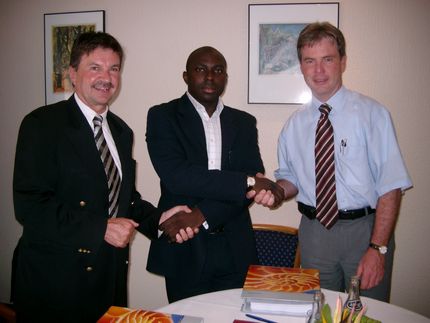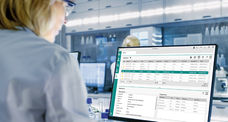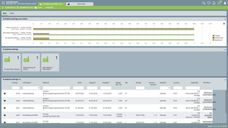The European Manufacturing Execution Systems (MES) Market
A New Study By Frost & Sullivan
Advertisement
Promise Of Efficiency Improvements Through Greater Real-Time Data Accessibility Spurs Demand For Manufacturing Execution Systems
Over recent years, companies have ramped up investments in improving control operations on the plant floor with Programmable Logic Controllers (PLCs) and, at the next level, Supervisory Control and Data Acquisition Systems (SCADA) that provide real-time display and visualisation of plant processes, enabling operator interaction and the functionality of flagging alarms.
At the same time, a whole raft of companies separately invested in business systems such as Enterprise Resource Planning (ERP) to automate the financial operations and aspects of the business, such as orders, sales and basic procurement activities.
To enhance operational efficiency, companies will need to synchronise the production process with business processes by integrating these two very separate entities, namely control systems and business systems. The integration of these independent categories is defined as Manufacturing Execution Systems (MES).
MES solutions enable instantaneous real-time communication between control systems and existing ERP technology. In addition, systems incorporating web-enabled information portals provide management with the facility to communicate to their distributed operations at disparate locations. This prospect is of particular interest to companies with a genuinely global footprint.
According to a new study by Frost & Sullivan, the international marketing consulting company, a rising total of companies are continuing to invest significant funds in MES solutions which provide greater transparency of procedures from the "shop-floor-to-top-floor", boosting competitive advantage in their respective markets. This trend was particularly evident in the automotive industry, where a number of factors including improving overall efficiency, have provided the impetus for growth in the MES market in recent years.
New investment programmes should herald soaring sales across a range of user sectors attracted by enhanced knowledge in real-time of their operations. Growth in demand from the important food and beverage market is expected to rise significantly, in addition to further interest from other industries that realise the benefits which this technology can yield,^Ô explains Brian Flannery, Industry Analyst at Frost & Sullivan.
For a wide variety of applications, the weakening economy demands greater efficiencies. Fewer personnel, shorter production cycles and the reduction of budgets will prompt the purchase of PC-based software and hardware solutions that allow access to relatively inexpensive off-the-shelf or 'out-of-box' solutions with their attributes of greater flexibility and user-friendliness during the configuration process. The move toward 'out-of-box' MES products will become increasingly popular towards the end of the forecast period, generating a significant proportion of additional demand.
Further aided by technological advancements across all aspects of collaborative manufacturing incorporating control information and data acquisition technologies, the European MES market is set to penetrate a broad spectrum of end-users. Recording sales worth $976.6 million in 2001, Frost & Sullivan expects the European MES market to be worth $2.12 billion in 2008.
Nevertheless, there are still challenges ahead. ERP suppliers^Ò imminent launches of new solutions, which will ultimately penetrate the MES market, will exert pressure on overall MES sales. Attracted by the buoyancy of the MES market, ERP suppliers will turn their attention to the provision of their own variation of MES solutions by synchronising their present business systems with plant floor control. This trend could potentially lead to the MES sector being increasingly sidelined, the study warns.
At present, suppliers of MES solutions are not affected by intense competitive price pressure, however, this scenario is likely to change in future years when further standardisation of solutions will lead to greater system comparisons.
^ÓLarge suppliers, in particular, may look towards increasing the standardisation of their software and hardware products, improving the ability to plug-and-play "out-of-box" solutions in an effort to keep system prices low. Smaller companies would be expected to concentrate their efforts on core competencies, thus ensuring survival through focusing their attention on improving their expertise and service products in specialist or niche market areas,^Ô Mr Flannery comments. Accounting for 65.3 per cent of total revenues in 2001, services constitute the largest product segment within the total European MES market. The complexity of the installation and the sophisticated level of operations and functions that an MES solution is expected to perform are responsible for the high proportion of revenues allocated towards the services sector.
Capitalising on its vast product range and dominant market share in almost every European region and application area, Siemens is leading the field as the most prominent contender in the European MES market. Other significant companies with a strong share of the overall market include GE Fanuc and Honeywell-POMS, that can attribute their positions in the market to their respective involvement and significant presence in the automotive and pharmaceutical industries. Other notable vendors are Rockwell Automation, Propack-Data, Werum, Teradyne and the software houses of Wonderware and Intellution.
Prospective customers cite system performance, service, quality and reliability as the most crucial factors determining their purchasing decisions. ^ÓStrategies for the future include further developments to improve the user-friendliness of product ranges and focus on existing core competencies to strengthen market position, and often these will be facilitated through a process of mergers and acquisitions with rival suppliers.^Ô
^ÓIn addition, improved customer care and after-sales services will be key factors that require further attention from suppliers in order to remain competitive in an increasingly challenging industry,^Ô Mr Flannery concludes.
The Study can be purchased from: Frost & Sullivan
































































